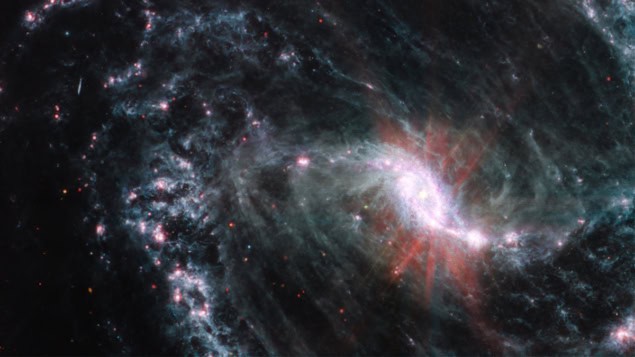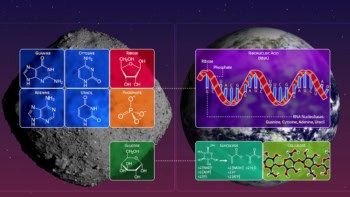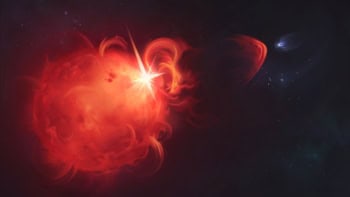
A bumper crop of measurements of the expansion rate of the universe have stretched the Hubble tension as taut as it has ever been, with scientists grappling with trying to find a solution.
Over 500 researchers have come together in the “CosmoVerse” consortium to produce a new white paper that delves into the various cosmological tensions between theory and observation. These include the Hubble tension, which is the bewildering discrepancy in the expansion rate of the universe, referred to as the Hubble constant (H0).
Predictive measurements made by applying the standard model of cosmology to the cosmic microwave background (CMB) give H0 as 67.4 km/s/Mpc. In other words, every volume of space a million parsecs across (one parsec is 3.26 light years) should be expanding by 67.4 kilometres every second.
Yet that’s not what Hubble’s law – which tells us the expansion rate based on a given object’s velocity away from us and its distance – says, as demonstrated by the CosmoVerse White Paper.
“The paper’s been getting a lot of attention in our field,” Joe Jensen of Utah Valley University tells Physics World. “You can easily see that the vast majority of measurements fall around 73 km/s/Mpc, with varying uncertainties.”
There’s no known reason why local measurements of H0 (based on supernovae observations) should differ from the CMB measurement. This discrepancy leads to two possibilities. Either there are unknown systematic uncertainties in measurements that skew the results, or cosmology’s standard model is wrong and new physics is needed.
A lot at stake
The highest rung on the cosmic distance ladder is a type Ia supernova – a white dwarf explosion. They have a standardizable brightness that makes them perfect for judging how far away they are, based on their luminosity curve. These measurements are calibrated by lower rungs on the ladder, such as Cepheid variable stars or the peak brightness of red giant stars (referred to as the “tip of the red giant branch”, or TRGB).
If the tension is real, then different calibrators should still give the same result. One of the few outliers is found in a new paper published in The Astrophysical Journal by the Chicago–Carnegie Hubble Program (CCHP) led by the University of Chicago’s Wendy Freedman.
CCHP’s latest paper uses the TRGB to arrive at a best value of 70.39 km/s/Mpc when combining measurements from the James Webb Space Telescope (JWST) – which is able to better resolve red giant stars in other galaxies – with Hubble Space Telescope data.
The CCHP team argue that this result is in line with the CMB measurements and removes the tension. However, their conclusion has met opposition.
“Their result is sort of in the middle of the Hubble tension, so I’m surprised that they would say they rule it out,” Dan Scolnic, an astrophysicist at Duke University in the United States, tells Physics World.
At a meeting of the American Astronomical Society in January 2025, Scolnic declared that the Hubble tension was now a crisis. CCHP’s results do not dissuade him from this conclusion.
“For some reason they don’t include a number of supernovae in their sample that they could have,” says Scolnic. “Siyang Li [of Johns Hopkins University] led a paper [on which Scolnic is a co-author] that showed that if one uses their TRGB measurements, and the complete sample of supernovae, one goes back to higher H0.”
Freedman did not respond to Physics World‘s request for an interview.
Different approaches
Jensen has also led a team that recently conducted measurements of H0 using TRGB stars, but in a different way by looking for surface brightness fluctuations (SBF).
“SBF is a statistical method that measures the brightnesses of red giant stars even when they cannot be measured individually,” says Jensen.
Individual stars in galaxies cannot be resolved at great distance – their light blends together, and the more distant the galaxy, the smoother this blend is. We describe this blended light as the galaxy’s surface brightness, and fluctuations are statistical in nature and result from the discrete nature of stars.
In old elliptical galaxies, the surface brightness is dominated by red giant stars, which are evolved Sun-like stars. Measuring the SBF therefore provides a value for the TRGB, from which a distance can be determined.
Using JWST images to measure the SBF of 14 elliptical galaxies, then using those to calibrate the distances to 60 more distant ellipticals, and then using that calibration to determine H0, Jensen’s team arrived at a value of 73.8 km/s/Mpc.
“The reason that we don’t get the same answer [as CCHP] is that we are not using the same JWST calibrators, and we don’t use type Ia to measure H0,” says Jensen.
This contradicts CCHP’s main assertion, which is that there must be unknown systematic uncertainties in either the type Ia supernovae or the Cepheids. Jensen’s team use neither, yet still find a tension.
Perhaps the most convincing evidence for the tension comes from the TDCOSMO (time-delay cosmography) team, who utilize gravitationally lensed quasars to measure H0.
Quasars fluctuate in brightness over a matter of days. When light from a quasar takes paths of varying lengths around a lensing object, it produces multiple images that have time lags relative to one another. The expansion of space can extend this time delay, providing a completely independent measure of H0.
In 2019 the H0LiCOW project used six gravitational lenses to arrive at a value of 73.3 km/s/Mpc. This result came with some scepticism. So they formed the new TDCOSMO consortium and “went on a six-year journey to see if their original measurement was okay,” says Scolnic.

Finding a consistent constant
TDCOSMO’s final conclusion is 72.1 km/Mpc/s, strongly supporting the tension. However, in all these measurements there’s wriggle room from various known measuring uncertainties.
“It’s important to remember that the uncertainties put us in only mild disagreement,” says Jensen. “I expect that we will soon know if the disagreement can be explained by the mundane choices of calibration galaxies and processing techniques.”
If it cannot, then the inescapable conclusion is that there’s something wrong with our understanding of the universe. Figuring that out could be the next great quest in cosmology.



